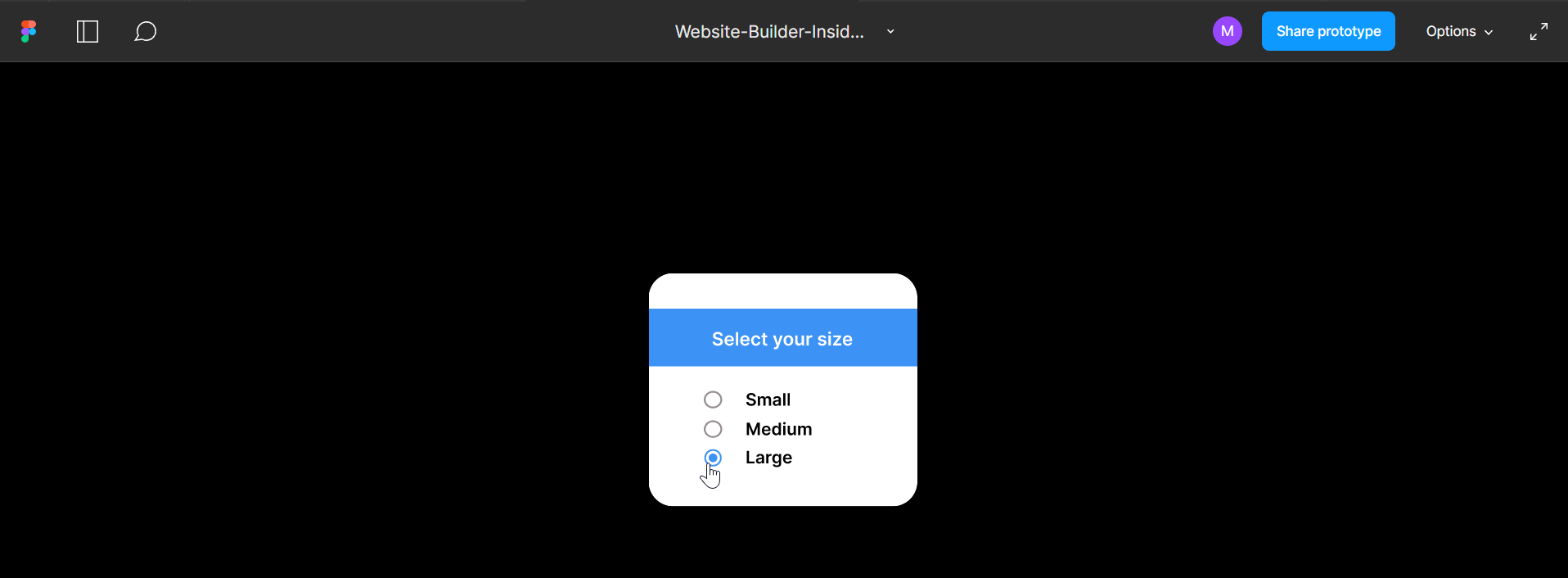Radio buttons are a type of input element that allows the user to select one option from a set. They are typically used in forms, where multiple choices are available but only one can be selected. Below are steps that you can follow to make and integrate them into your design.
1. Insert Radio Button Icons in your Design
To create a radio button in Figma, first, go to Resources > Plugins.
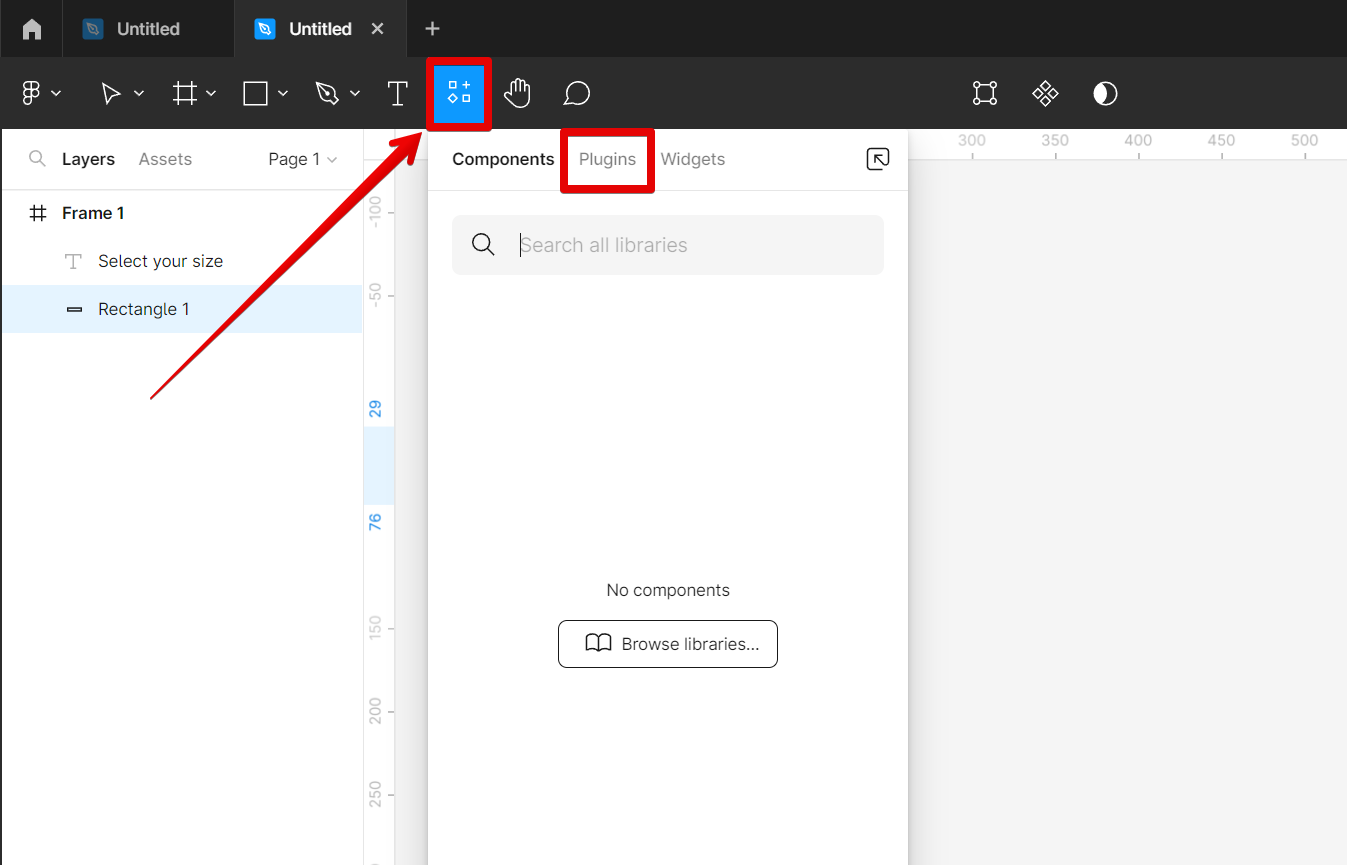
From there, search for “Eva Icons” and then, click on the “Run” button beside it.
![]()
In the running Eva Icons plugin window, search for “radio button” and then press “Enter” on your keyboard.
![]()
Select the two radio buttons from the results. The first one represents an unselected radio button and the other one represents a selected radio button. Drag the two radio buttons to your canvas.
![]()
2. Resize the Radio Buttons and Add Text beside them
Now, resize the two radio buttons to your preference by selecting them and dragging the handles around them.
![]()
The next step is to place the “Unselected Radio Button” icon in your frame and add text beside your radio buttons using the “Text” tool.
![]()
Create copies of the radio button and text pair, then change the text of the copies accordingly. These will serve as the options that the users will need to choose from.

3. Make Copies of your Frame
Once done, create three copies of your frame by selecting your frame then using the keyboard shortcuts “Ctrl+C” to copy and “Ctrl+V” to paste.
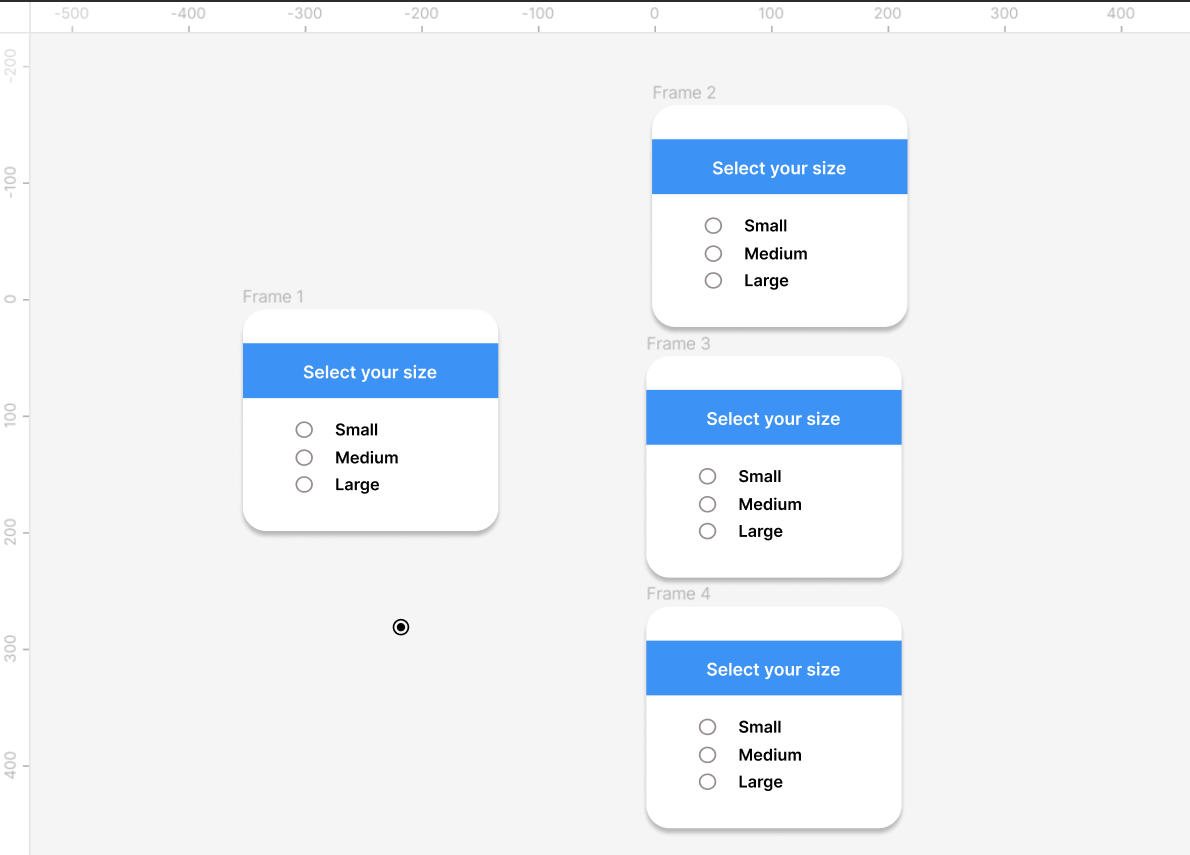
In each of the three frames, replace one of the radio buttons in such a way that one unique option is selected for each frame. Use the “Selected Radio Button” icon for this.
![]()
4. Establish the Connections Between the Frames
Select the “Prototype” tab from the right menu to set up your animations, then hover over one of the radio buttons in Frame 1 until a “+” icon appears.
![]()
Connect the radio buttons from the first frame to their respective results. In this case, connect the radio button with the “Small” option in Frame 1 to Frame 2 which has the “Selected Radio Button” icon beside the “Small” option. For the “Interaction details” choose the “On click” option.
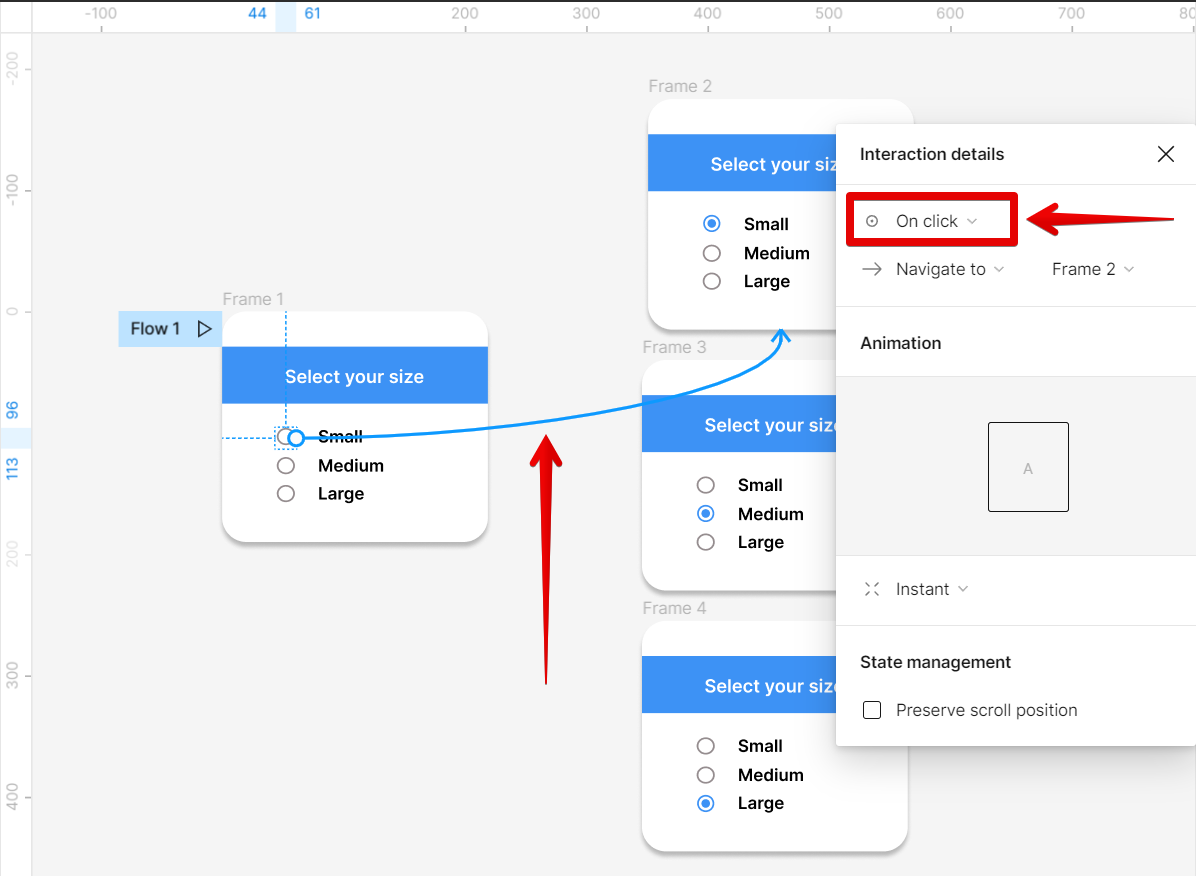
Do the same for the other radio button options.
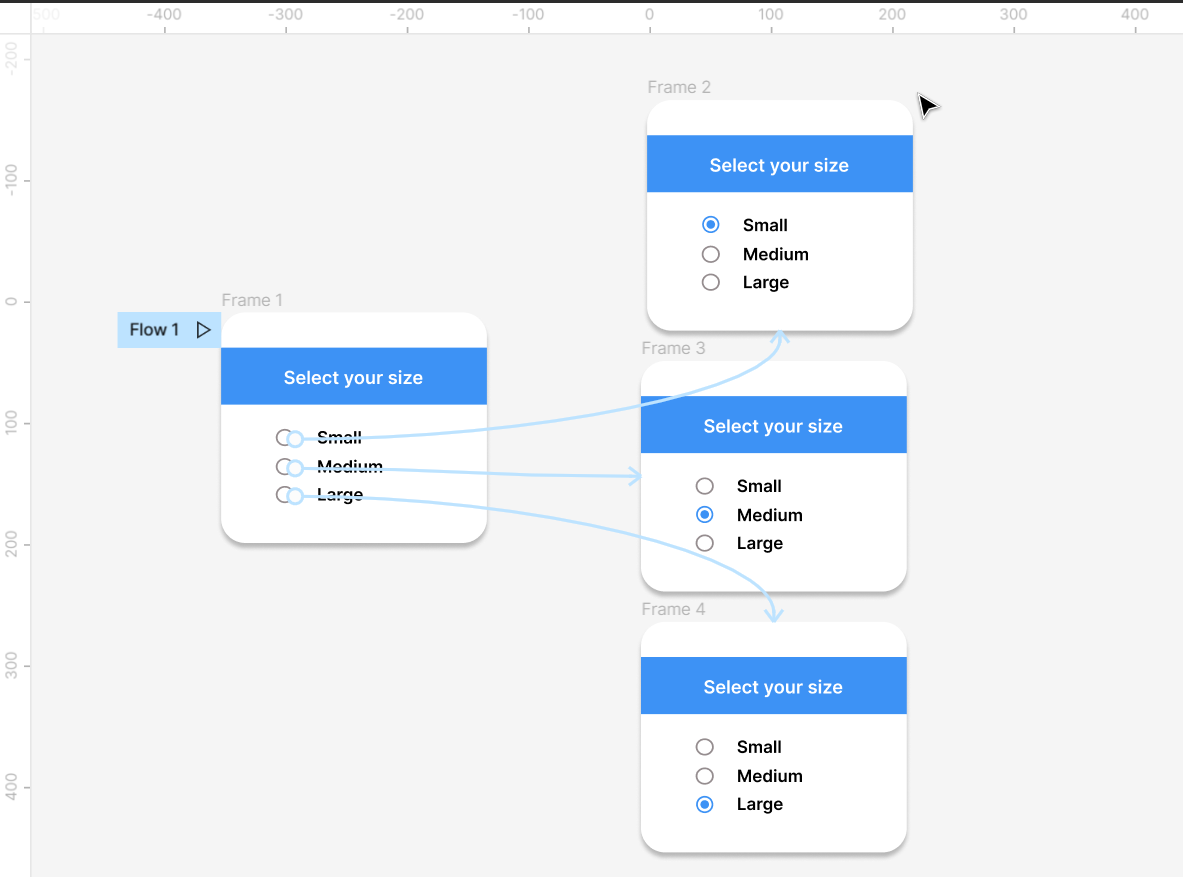
The next step is to connect each of the Copy Frames with each other in such a way that after selecting one of the options, you can still change your selection. To do this, in this case, select the radio button with the “Medium” option in Frame 2 and connect it to Frame 3 which has the “Selected Radio Button” icon beside the “Medium” option. Choose the “On click” option in the “Interaction details” window.
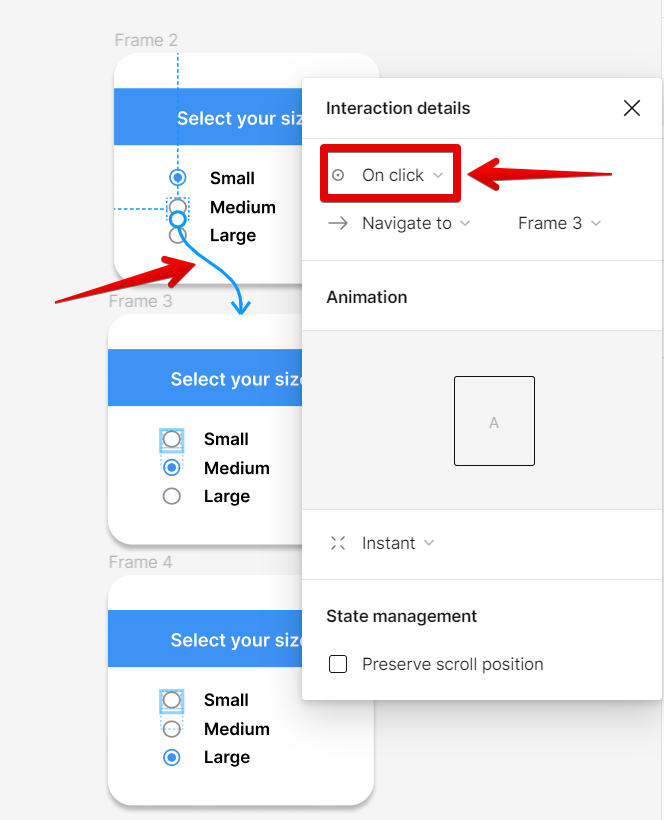
Do the same for the other frames. To summarize, shown below are the connections:
- Frame 2 Medium option’s radio button connects to Frame 3
- Frame 2 Large option’s radio button connects to Frame 4
- Frame 3 Small option’s radio button connects to Frame 2
- Frame 3 Large option’s radio button connects to Frame 4
- Frame 4 Small option’s radio button connects to Frame 2
- Frame 4 Medium option’s radio button connects to Frame 3

Lastly, connect the Copy Frames to the Original Frame (Frame 1) in such a way that when the selected option is clicked again, the radio button will go back to its original unselected form. In this case, in Frame 2, select the “Selected Radio Button” icon beside the “Small” option and connect it to Frame 1. Select “On click” from the interaction options.
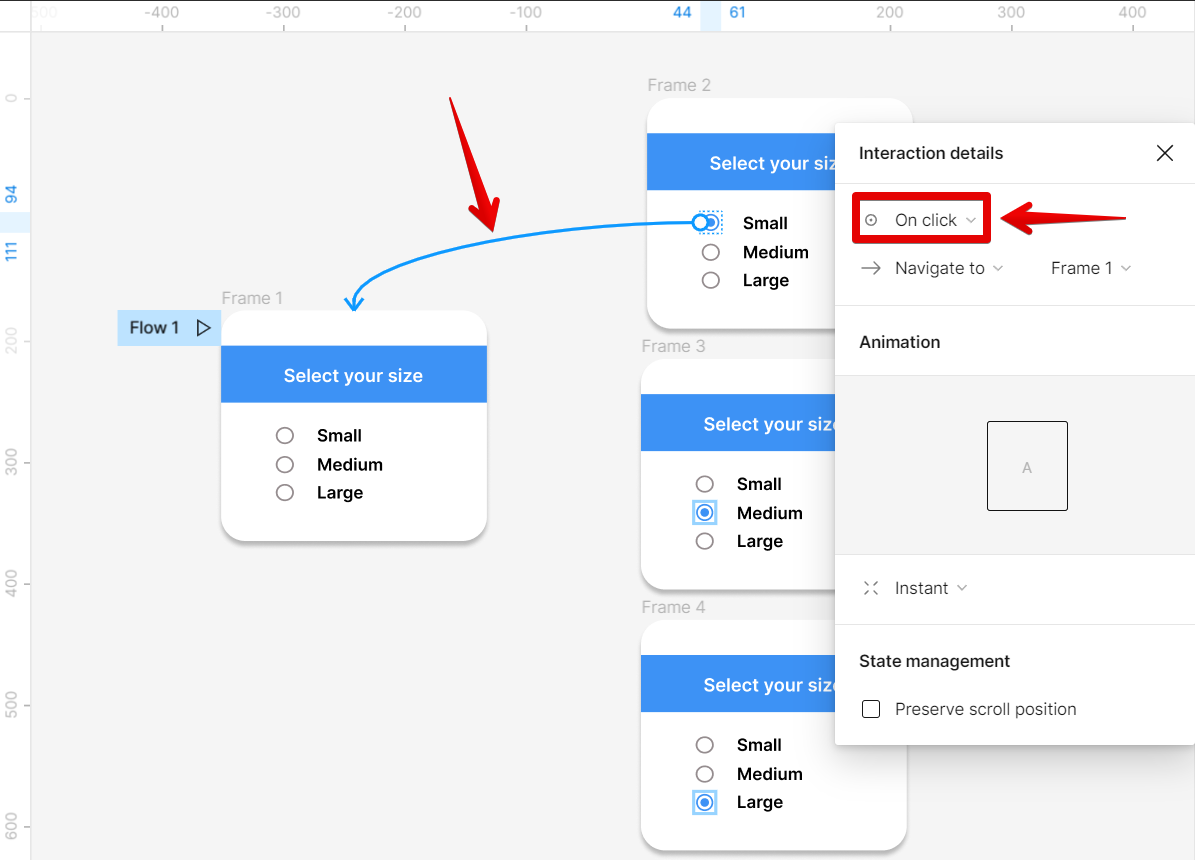
Do the same for the other frames.
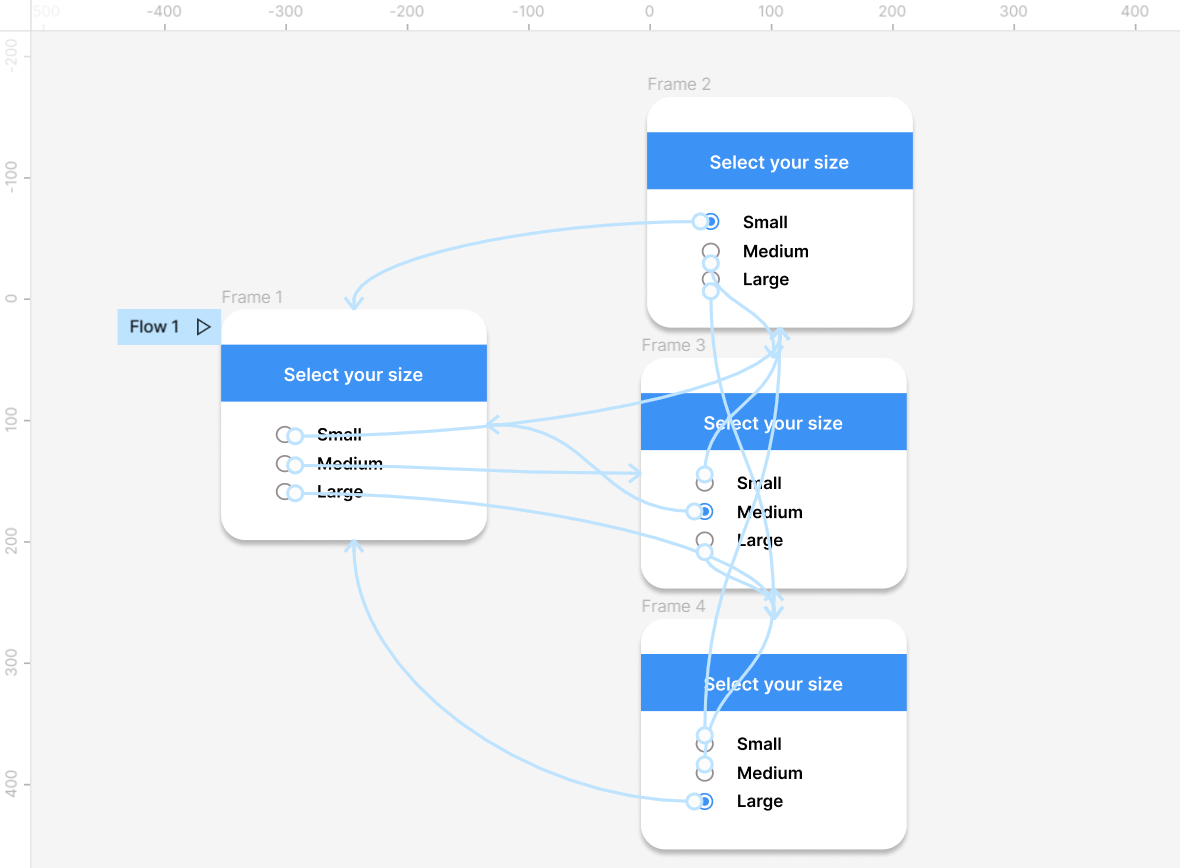
When you’re finished creating your radio button, just click on the “Play” button at the top to see a preview of your design.
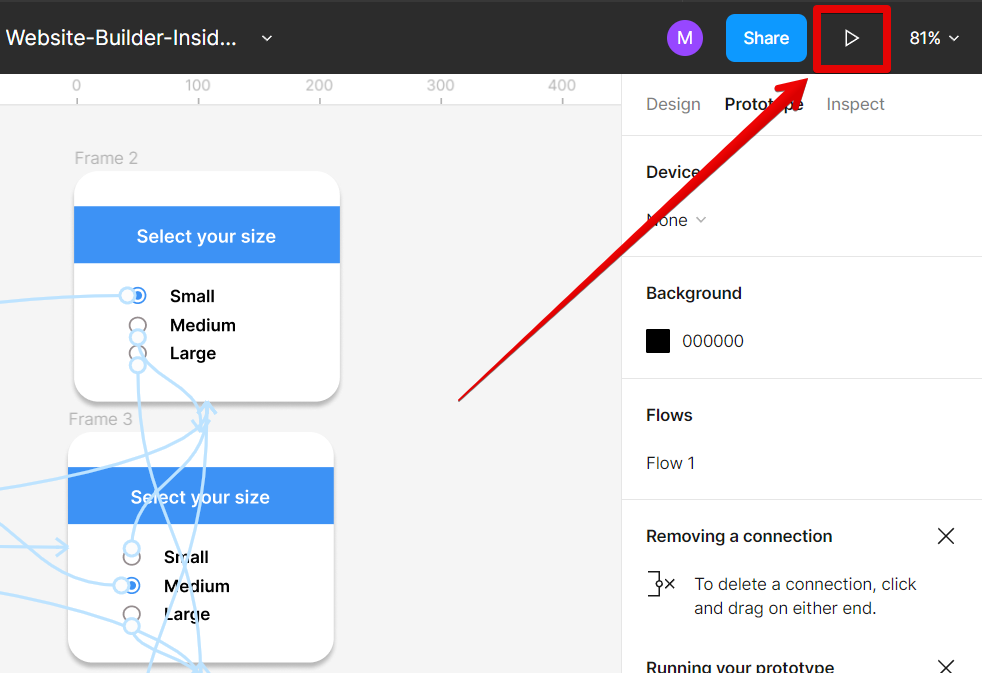
Now you can make designs with radio buttons!
